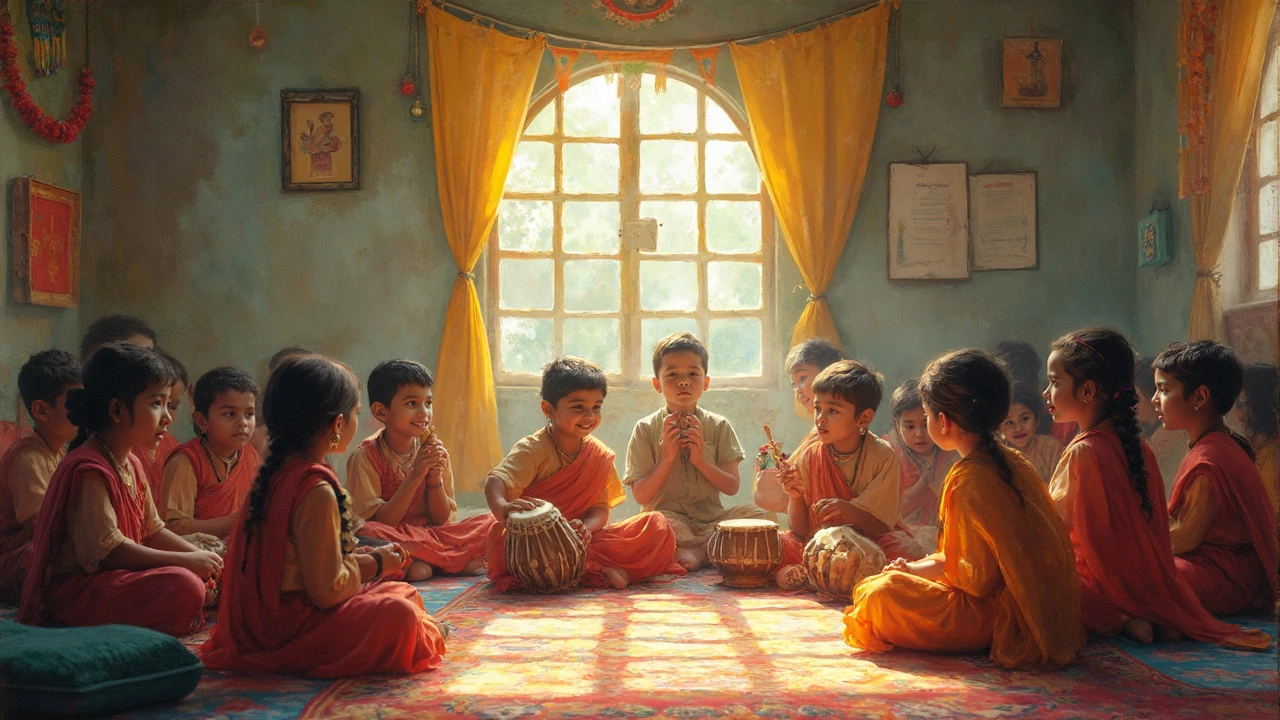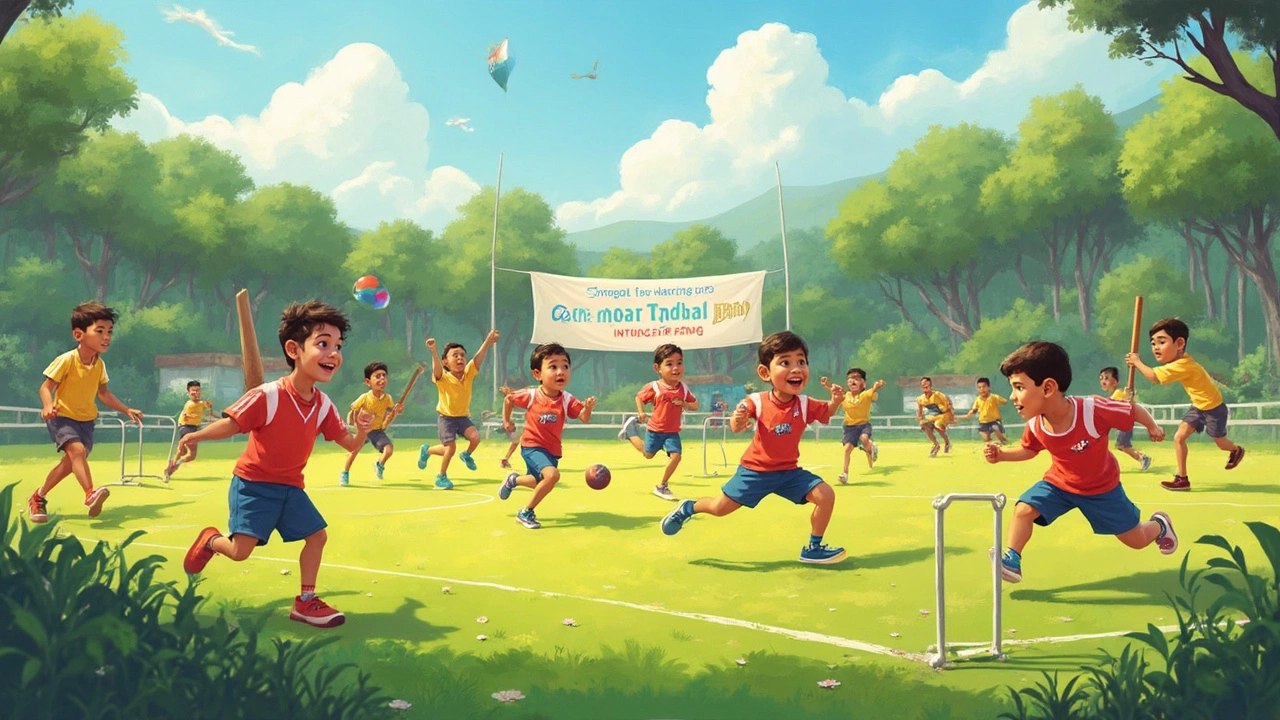Have you ever wondered what exactly after-school activities are called? Well, the short answer is they often go by names like clubs, student organizations, or extracurriculars. But what's in a name, right? These activities are more than just a label. They are platforms for growth, discovery, and fun beyond the confines of classroom learning.
Picture this: your child rushes to join a robotics club or signs up for a drama class. What's happening here? They're diving into a world teeming with opportunities to learn new skills, make friends, and yes, even improve grades. Research by the National Center for Education Statistics shows that students involved in after-school programs tend to perform better academically. Plus, they're a great way for kids to blow off steam and get creative.
If you're a parent, teacher, or student, you're in for some handy tips throughout this journey. We’ll cover everything from understanding different kinds of clubs to figuring out which ones might be the best fit for your child's interests. Stick around, and you might just find the perfect after-school adventure.
- Definition of After-School Activities
- Benefits of Joining Clubs
- Popular Types of Clubs
- Choosing the Right Activity
- Tips for Parents
Definition of After-School Activities
When we talk about after-school activities, we're diving into a universe that's all about enrichment beyond the usual school hours. These encompass a range of structured programs designed to provide students with a space to explore interests, develop skills, and have fun outside regular classes. Schools, communities, or independent organizations typically host these activities.
Think of clubs like after-hours adventures, offering kids opportunities they might not get during a typical school day. These activities could be anything from sports teams, like soccer or basketball, to something more artsy like choir or theater.
Types of After-School Activities
Here's a fun fact: according to the Afterschool Alliance, more than 10 million kids in the United States participate in after-school programs each year. That's a lot of excitement happening post the final school bell! But what do these programs look like? Let’s lay them out:
- Sports Clubs: These include both team sports like soccer, basketball, and baseball, and individual sports such as gymnastics or tennis.
- Arts and Culture: Activities could range from music and dance lessons to drama clubs and art classes.
- STEM Organizations: Many kids jump into science, technology, engineering, and math-related activities like robotics clubs and coding classes.
- Academic Clubs: Think debate teams or math societies where kids can dig deeper into subjects they love.
- Community Service: Some groups focus on volunteer work, nurturing a sense of social responsibility in students.
Each category brings something unique to the table, making extracurriculars truly customizable to any student's interests.
| Activity Type | Percentage of Availability |
|---|---|
| Sports | 40% |
| Arts and Culture | 20% |
| STEM | 15% |
| Academic | 15% |
| Community Service | 10% |
The variety ensures there's something for everyone. They're fun, they're social, and they're a great way to help kids build skills that might not be the main focus during classroom hours. So, while they might just look like casual fun, these after-school activities play a crucial role in shaping well-rounded individuals.
Benefits of Joining Clubs
When it comes to after-school activities, joining clubs can be a game-changer for kids. It's not just about filling their time; it's about enhancing their lives.
Social Skills and Networking
One of the biggest perks of clubs for kids is the social aspect. Kids get to meet new people, make friends, and learn how to work in teams. This isn't just helpful now; these skills are vital for future success. Think of it as a practice ground for real-world interaction.
Academic Performance
Believe it or not, being part of a club can actually boost a child's academic performance. Extracurricular activities often require problem-solving and critical thinking, skills that are directly transferable to schoolwork. Studies have shown that students involved in student organizations often perform better academically.
Skill Development
Whether it's a debate club or a gardening group, there's a club out there that can help your child develop new skills. They could learn how to code, speak a new language, or even master a musical instrument. These aren't just hobbies; they are skills that can open doors in the future.
Boosting Confidence
Being good at something outside of school can do wonders for a child's confidence. It gives them something to be proud of and a sense of accomplishment that is hard to find elsewhere.
Time Management
Balancing club activities with schoolwork teaches kids valuable lessons in time management. They learn how to prioritize tasks and make the most of their time, skills that will serve them well into adulthood.
To sum it up, joining after-school clubs is about much more than simply staying busy. It's about helping kids grow in a supportive and constructive environment.
| Benefit | Description |
|---|---|
| Social Skills | Makes new friends and learns teamwork. |
| Academic Boost | Improves critical thinking and problem-solving skills. |
| Skills Development | Master new talents and abilities. |
| Confidence Building | Becomes confident through achievements. |
| Time Management | Learns to prioritize and manage time effectively. |

Popular Types of Clubs
If you're new to the world of after-school activities, let me tell you, there's a lot to choose from! Each club offers its own unique set of benefits and experiences. Let's dive into a few of the popular types.
Sports Clubs
Sports clubs are all about getting active and having fun. They're perfect for kids who love a good game of soccer, basketball, or even niche sports like frisbee. A big perk? They teach teamwork and leadership. Plus, staying active is great for both body and brain.
STEM Clubs
If your kid is curious about science, technology, engineering, or math, STEM clubs are where they need to be. These student organizations often include activities like coding, robotics, and science experiments. A 2022 survey found that students involved in STEM clubs exhibit higher problem-solving skills!
| Type of Club | Main Focus |
|---|---|
| Robotics | Engineering and Programming |
| Coding | Software Development |
Art and Drama Clubs
For the creatively inclined, art and drama clubs are fantastic. These extracurriculars offer a safe space to express oneself through painting, acting, or even creative writing. Plus, public speaking skills do wonders for confidence!
Music Clubs
Ever thought about how useful music can be? Joining a band or choir not only hones musical talents but also helps improve memory and discipline. Research suggests kids in music programs score higher on standardized tests.
Language and Culture Clubs
Got a kid interested in languages or cultures? These clubs provide a great platform to learn new languages or explore different cultures. It’s an amazing way for kids to broaden their horizons and enhance their communication skills.
With so many options, there's definitely something that will spark any child's interest. The key is to let them explore and find what they're passionate about. Who knows? The right club might just pave the way for their future career!
Choosing the Right Activity
Choosing the right after-school activities for your kid can feel a bit like finding the perfect jeans—it needs to fit just right. So how do you start? Begin by considering what sparks your child's interest. Are they drawn to drawing, fascinated by science experiments, or do they love playing soccer? Understanding their likes can guide you in selecting activities that they’ll stick with and enjoy.
Identify Interests and Strengths
Every child is unique, and so are their interests and strengths. Some kids are naturally inclined towards arts, others may excel in sports or have a knack for organizing events. Sit down with your child and talk to them about what they enjoy, asking them about activities they’re curious about. This opens the door to trying out different clubs for kids that align with their passions.
Balance and Schedule
No one wants to burn out—not even our energetic kiddos. Amend your schedule to strike a balance between schoolwork and these extracurricular engagements. Keep an eye out to ensure your child isn't overloaded. Check in regularly about their enjoyment and stress levels as they navigate their extracurriculars.
Peer Influence
Friendships can play a big role in a child’s eagerness to join a specific club. If your child has friends in a particular activity, their enthusiasm can motivate them too. But remind them that it's ok to be different, and pursue clubs that truly speak to their own interests.
Trial and Error
It's perfectly okay for your child to try out a few different activities before settling on the right one. Many schools or community centers offer trial sessions—take advantage of these to test the waters without long-term commitments. This way, your child can discover what really makes them tick without pressure.
Remember, the goal is to enable a rewarding experience that complements their education. Finding the right extracurricular activity is all about striking that balance between passion and practicality, leading to a well-rounded individual.

Tips for Parents
Diving into the world of after-school activities can feel overwhelming, especially with so many options on the table. But don't worry, there're some straight-forward ways you can navigate this. First things first, consider what your child is interested in. Are they fascinated by science, music, or maybe sports? Asking them directly might provide some surprising answers.
Understand Your Child's Interests
A crucial step is understanding where your kid's passions lie. If they love building things, a robotics or engineering club could be a great pick. Meanwhile, artistic souls might thrive in an art or theater club. The key is aligning the activity with what makes them tick.
Check the Commitment Level
It's important to know how time-consuming an activity might be. A casual club might meet once a week, while others, like sports teams, might have a rigorous schedule. Discuss with your child to ensure it doesn’t interfere with schoolwork or much-needed downtime.
Look at the Logistics
Think about location and transportation. Is the activity held at school or do they need a lift to a different venue? You also want to check any costs involved, like uniforms or equipment fees, as these can add up quickly.
Encourage Trying New Things
Kids may not always know what they like until they’ve tried it out. Encourage your child to experiment with extracurriculars that they might initially overlook. Switching things up could lead to unexpected interests and skills.
Stay Involved
Your support can make all the difference. Attend their events, be it a science fair, a game, or a play. It shows your child you're invested in their growth and can also be super rewarding for both of you.
According to a 2022 study by the After-School Alliance, 73% of parents saw these activities as essential to their kids' overall well-being and social skills.
| Aspect | Percentage |
|---|---|
| Academic Improvement | 57% |
| Social Skill Enhancement | 64% |
| General Well-being | 73% |
So, take these tips, have a chat with your kid, and set out to explore the exciting world of after-school clubs together.





